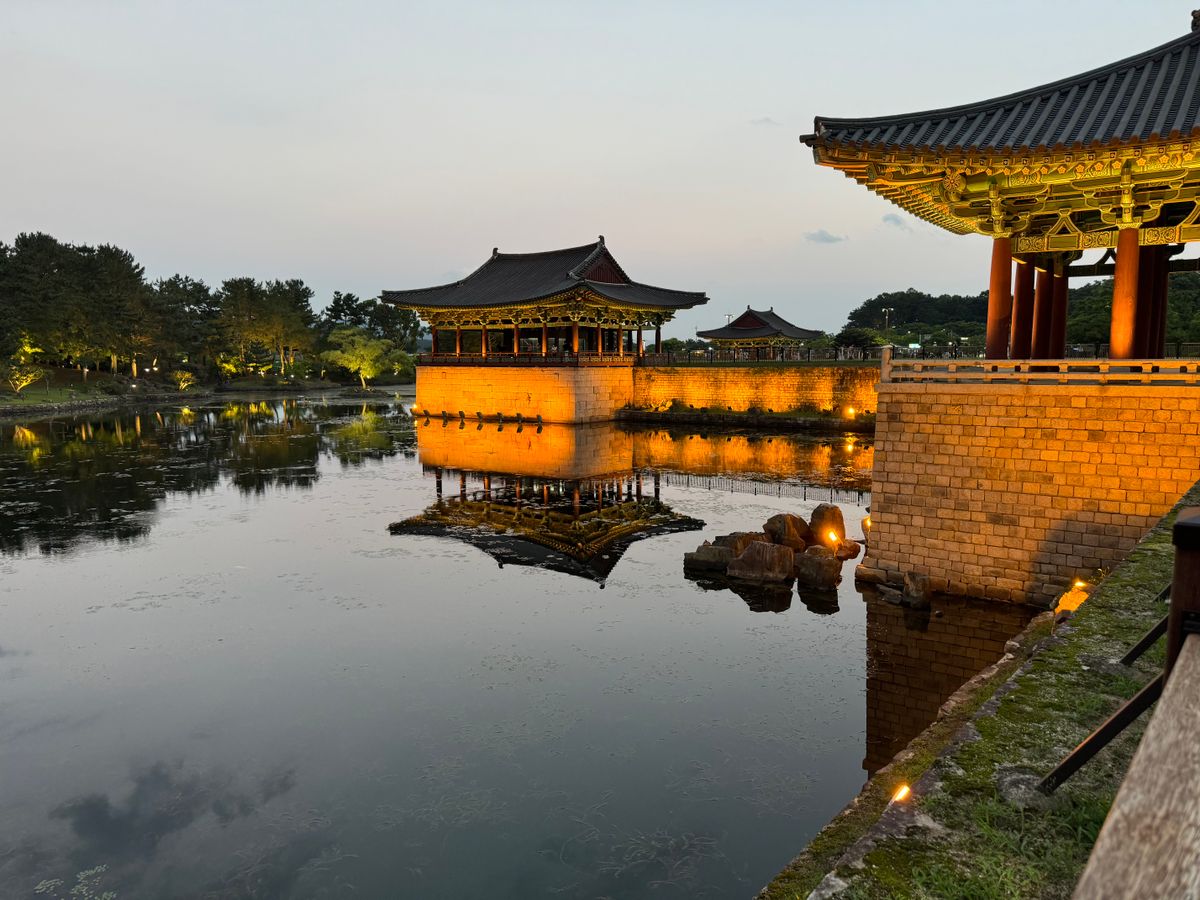About
Wolji is an artificial pond that was originally located near the Silla palace called Banwolseong. The pond was part of the complex, constructed on the orders of King Munmu in 674. The pond measures 200 meters from east to west and 180 meters from north to south. When viewed from above, it has an unusual shape that some say represents the outline of the country at the time of construction, acting as a kind of watery map of Korea. The pond contains three small islands and the surrounding area has a manufactured landscape of 12 small hills to the northeast.
This pond was referred to as Anapji during the Goryeo and Joseon eras. In the 1980s, a pottery shard was found with the word wolji carved on it, which translates to "pond that reflects the moon." It was decided that this must be the true name of the pond, and the site was renamed to Donggung and Wolji.
Donggung and Wolji was a secondary palace used by the crown prince of the Silla Kingdom. Rare animals were brought in to the area to create an exotic garden fit for royalty. It also served as a banquet site for important national events. There is mention of a royal reception held by King Gyeongsun, in 931, by which time the Silla Kingdom was beginning to crumble. After the fall of Silla, the pond fell into disrepair for many centuries.
In 1974, as part of the renovation project of historic sites around the city, Wolji was dredged and rebuilt. During the excavation, almost 33,000 artifacts were found in and around the pond. The abundance of discoveries include roof tiles, architectural materials, pottery, gilt bronze Buddha figures, jewelry, and small everyday items. These objects offer an insight to Buddhist art and everyday life during the Silla era. These are held in a special exhibition at the nearby Gyeongju National Museum.
Research revealed that the pond had been surrounded by stone walls, and that five buildings once stood on the west and south sides. Some of these buildings are now recreated at the edge of the pond, including one that houses a diorama showing what the area would have looked like at its height. Waterway systems were also discovered. The city government tried to undertake further restoration work in 2018 but it was suspended because UNESCO opposed the project.
Viewing the pond at night is a must, the pond and pavilions are lit up and it makes for a beautiful area to wander.
Related Tags
Published
April 29, 2021







































